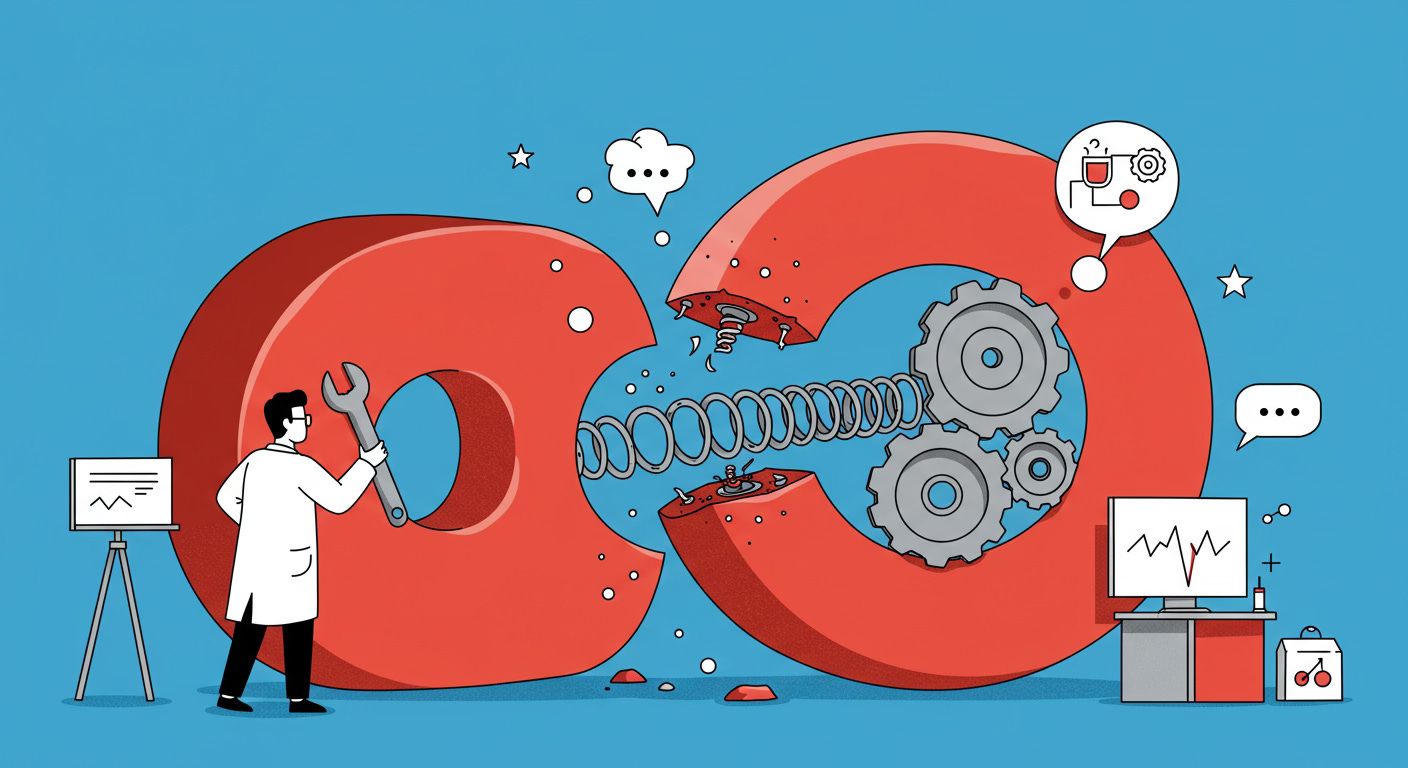Reverse-engineer your rivals 🦊 The shortcut to market dominance
Beat the biggest player in your market by learning their moves first
Even in the most crowded markets, you can still launch something that challenges the biggest players. I’ve done it myself, only to fail when I ran out of runway.
Looking back, I know why: I was copying the incumbent playbook, trying to match them feature for feature. Unless you’ve got an endless pit of VC cash, that’s the fastest road to failure.
That’s why I asked Mike Goitein, author of Product Strategy Decoded and an experienced strategy coach, to share his framework for reverse-engineering competitors. His approach shows how to spot the weak points in an incumbent’s choices and build your own system around those gaps. 👇🏻
— Millennial Masters is sponsored by Jolt ⚡️ Reliable hosting for modern builders
Outsmart your rivals: Play the gaps, not the game
In 2000, two entrepreneurs in flip-flops flew from California to Dallas with a $50 million offer that would change business history.
Netflix co-founders Reed Hastings and Marc Randolph met with Blockbuster CEO John Antioco, proposing the video giant acquire their struggling DVD-by-mail startup. Blockbuster executives "laughed them out of the building."
Blockbuster was worth $8.4 billion with 9,000 stores and 65 million customers. Netflix was losing $50 million that year.
Today, Netflix commands a market cap over $300 billion. Blockbuster filed for bankruptcy in 2010.
What Netflix understood was how to reverse-engineer the market leader's choices to find the precise gaps where the smaller player could win.
Why competitor decks mislead
Most companies study competitors by collecting every piece of data they can.
Teams spend months compiling analyses that gather dust because they don’t reveal why its strategy’s working or where vulnerabilities lie.
Just months before bankruptcy in 2010, Blockbuster's strategy officer Kevin Lewis said “we’re strategically better positioned than almost anybody out there.”
Netflix, never complacent, reverse-engineered Blockbuster's strategic system to understand exactly how the market leader created value, identifying gaps to exploit.
The five moves that expose any rival
Instead of analysing everything, reverse-engineering involves mapping just five choices with the strategy choice cascade method:
Aspiration: What are they optimising? Blockbuster focused on revenue per store.
Where to play: Which geographies, customer groups, and channels do they dominate?
How to win: What edge do they rely on? Blockbuster leaned on selection, instant access, and late fees.
Capabilities: Which activities keep that edge alive? Think real estate deals, inventory systems, studio contracts.
Systems: Which processes and metrics reinforce the model? Same-store sales, turnover, penalties.
Look at these choices as a system, not fragments. That’s where you see the weak spots. Blockbuster’s integrated advantage collapsed when streaming removed the need for physical locations and late fees.
You, too, can reverse-engineer your leading competitor to find customers you can serve better, regardless of your size.
Step 1️⃣ Shrink the field
Pick a small set of rivals and reverse-engineer their choices. Look for overlap and blind spots:
Do they chase the same customers?
Which channels or segments are ignored?
Where could your capabilities diverge?
Netflix saw that every rental giant was designed to make physical retail profitable. Stores meant late fees, returns, and travel. Customers hated all three. The incumbents couldn’t abandon them without wrecking their own model.
Step 2️⃣ Turn gaps into plays
Once you see the patterns, turn them into options. Ask: where can we win that others can’t follow?
Netflix’s map of Blockbuster showed clear openings:
Drop late fees with a flat subscription.
Serve rural households with no nearby stores.
Build recommendation algorithms to personalise choices.
Invest in original content the incumbents couldn’t match.
Each came straight from Blockbuster’s blind spots.
Step 3️⃣ Pressure-test every assumption
Every option has hidden conditions. Spell them out before you commit.
For Netflix, the DVD-by-mail bet required:
Customers willing to wait a day or two for delivery.
Continued growth in DVD adoption and a reliable postal system.
A competitor like Blockbuster unwilling to undercut itself with mail delivery.
Efficient fulfilment and smart recommendation tech.
Unit economics strong enough to cover postage and inventory.
By mapping these, Netflix knew what to test first and what risks mattered most.
Step 4️⃣ Tackle your riskiest assumption first
Start with the assumption you’re least confident in. Put it under pressure fast.
Netflix worried customers wouldn’t tolerate delivery delays. They ran that test first, discovered demand was strong enough, and doubled down on fulfilment.
By confirming the riskiest condition early, they avoided wasting years chasing an idea that might never scale.
Why reverse-engineering wins
Traditional analysis looks backwards. It piles up data without showing how the pieces fit together.
Reverse-engineering maps the system. It shows how a competitor’s choices reinforce each other and where those choices create weak spots.
Netflix didn’t treat Blockbuster as a video rental company. They treated it as a system built on two store visits per rental, late fees, and limited selection. Those choices created customer pain and left the door open.
By 2008, Netflix had millions of subscribers. By 2010, Blockbuster had collapsed.
The advantage came from exposing the assumptions that held Blockbuster together and building a strategy that worked once those assumptions no longer did.
Find the blind spots hiding in plain sight
Every market leader operates on a set of assumptions. Over time, those assumptions stop matching reality and open gaps for others to exploit.
Instead of mirroring incumbents, study how their choices create customer pain or market blind spots. Build your playbook around addressing those directly.
Start with one competitor. Map its strategy choices and trace how they connect. Find the friction points. Build your own system to solve them.
No matter how dominant they look, no company is safe forever. Size doesn’t protect a model that no longer serves the customer.
👤 About Mike Goitein
Mike is the author of Product Strategy Decoded, where he reverse-engineers the strategy of products, startups, and creators each week using a proven framework.
He’s a Certified Strategy Professional with more than 15 years of experience helping Fortune 200 companies and startups alike sharpen their choices and deliver measurable results.
More big game strategy from Millennial Masters:










Thanks for your collaboration and editorial partnership on this one, Daniel.
Some key insights here, thanks to your strategic wisdom.
Love this – such a goodbreminder that it’s not about having more, it’s about seeing differently.
You’ve nailed the real power move here: instead of fighting feature-for-feature, look at where the market leader is locked into decisions they can’t undo. That’s the kind of insight that creates space for real innovation. According to CB Insights
, 35% of startups fail due to no market need – and a big chunk of that comes from copying incumbents instead of serving differently.
What’s one market you think is begging to be reverse-engineered right now?